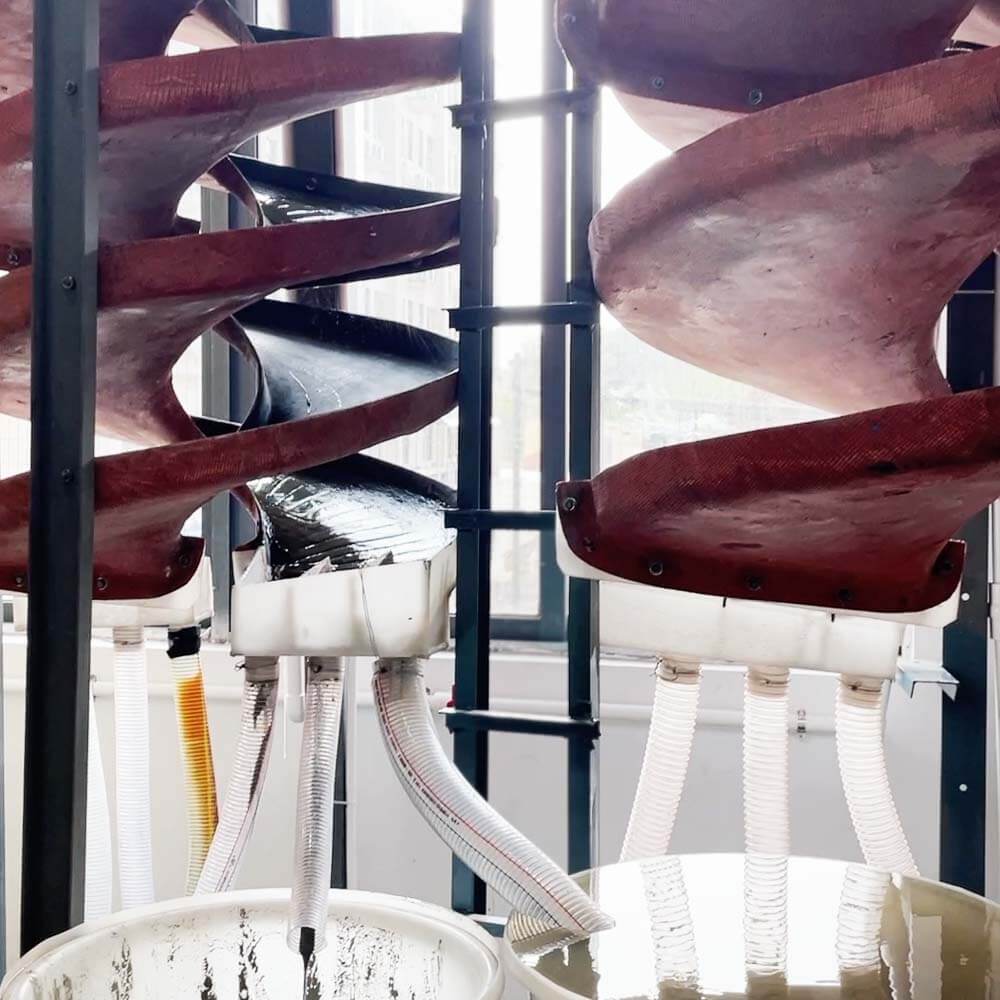Ilmenite is weakly magnetic; the crystals are generally plate-shaped and are gathered together to form blocks or granules. The color is iron black or steel gray, with steel gray or black streaks. When containing hematite inclusions, it is brown or brown-red, with metallic to semi-metallic luster. However, ilmenite is a titanium iron oxide mineral that plays a vital role in mineral processing due to its high titanium content. This versatile mineral is used across various industries, including aerospace, automotive, and renewable energy. Its importance lies in its ability to be processed into titanium dioxide, an important pigment in paints, plastics, and paper. In addition, the magnetic properties of ilmenite make it valuable in the production of high-strength alloys and as a component in the manufacture of welding rods.
Before determining the ilmenite mineral processing process, it is usually necessary to understand the composition and properties of titanium minerals, clarify the characteristics of each mineral processing method, and determine the specific process based on mineral processing experiments.
Ilmenite mineral processing method
Ilmenite mineral processing is a complex and critical part of titanium dioxide production. As technology advances, new ilmenite processing methods are constantly being developed to explore and test to maximize efficiency and sustainability. Ilmenite is unique in mineral processing. Its complex chemical composition requires innovative extraction and separation techniques to obtain pure titanium dioxide. An emerging technology involves using advanced separation techniques such as gravity separation, flotation, magnetic separation, or electrostatic separation to extract high-grade ilmenite from ore with increased precision.
- Since the density of ilmenite is higher than that of gangue minerals, gravity separation can be used as pretreatment or rough selection and tailing.

- Magnetic separation is widely used in the selection of titanium-containing minerals.
- The electric separation method is used in titanium mineral selection. When the coarse concentrate contains ilmenite, rutile, and non-conductive minerals such as zircon, it can be separated by electric separation.
- The flotation method separates primary titanium-containing ores, especially for separating fine-grained titanium-containing ores. Sometimes, it is also used in the selection of coarse concentrates.
Ilmenite mineral processing test
Laboratory mineral processing testing is performed to evaluate the response of ore samples to various processing methods to select the best mineral processing method. Ilmenite is a titanium iron oxide mineral often processed to extract titanium.
- The first step involves crushing and grinding the ilmenite ore to achieve a fine particle size, facilitating an efficient downstream extraction process. This increases the surface area for chemical reactions and facilitates the separation of ilmenite from other minerals. This is typically done to simulate particle size distributions encountered in actual processing plants.
- Mineralogical and chemical analysis: Mineralogical analysis determines the mineral phases of ilmenite ore. X-ray diffraction (XRD) and microscopy are standard techniques used for this purpose. Then, chemical analysis is performed to determine the elemental composition of the ilmenite sample.
- A key aspect of these mineral processing steps involves using gravity separation, which helps separate titanium minerals from other minerals in the ore. Researchers can effectively concentrate titanium-containing materials using spiral chutes or shaking tables, paving the way for further processing.
- The magnetic separation method uses the different magnetic properties of various minerals to separate and concentrate titanium-containing compounds effectively. Magnetic separation separates ilmenite from other minerals based on its magnetic properties, such as using high-intensity magnetic separators to efficiently enrich valuable components to achieve higher yields and purity levels.
- Flotation tests evaluate the potential to separate ilmenite from other minerals. Different reagents and flotation conditions can be tested to optimize ilmenite recovery.
Finally, the lab test results are compiled into a comprehensive report. Includes recommendations for optimal processing routes and conditions for ilmenite extraction.
Laboratory mineral processing experiments on ilmenite extract titanium and other valuable elements from this mineral. High-yield, high-purity level products can be obtained through the combination of crushing, grinding, gravity separation, magnetic separation, flotation, and other processes. To unleash the full potential of this valuable mineral resource, further research and experiments must be conducted to advance the field of mineral processing. Asia and Africa International provides comprehensive mineral processing testing services and high-quality equipment. Contact us to get a quote online!
